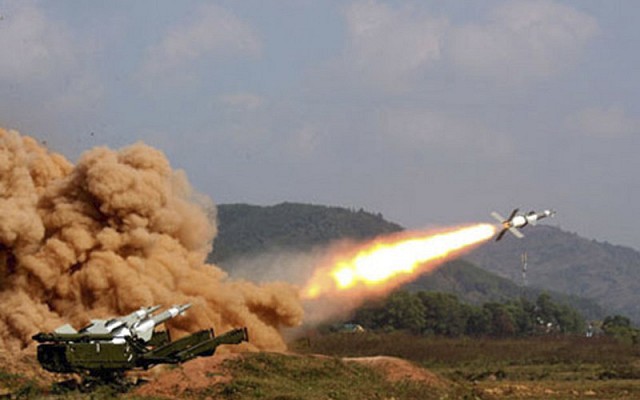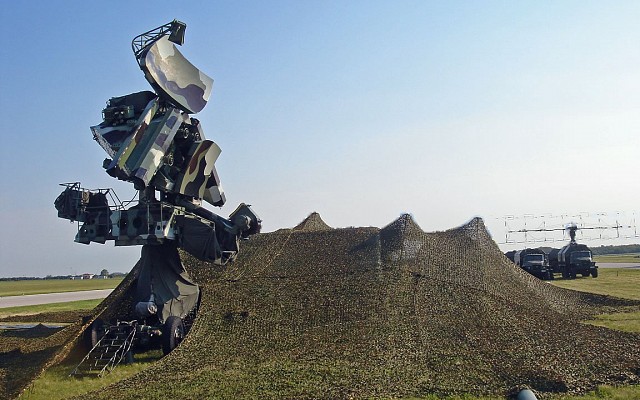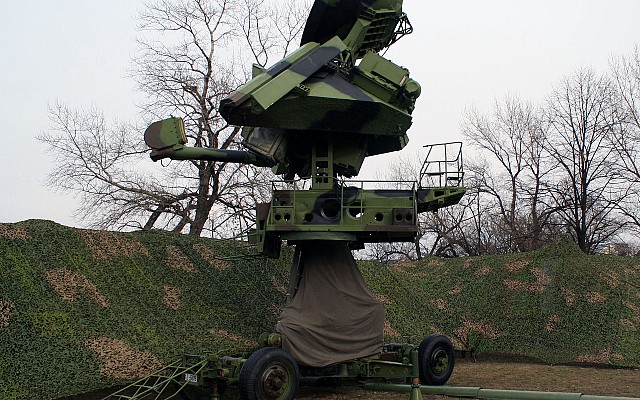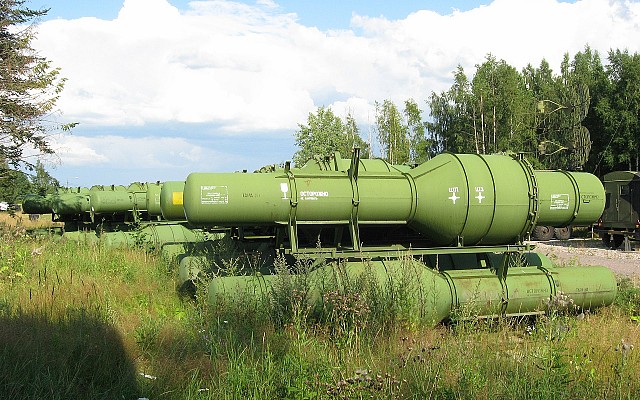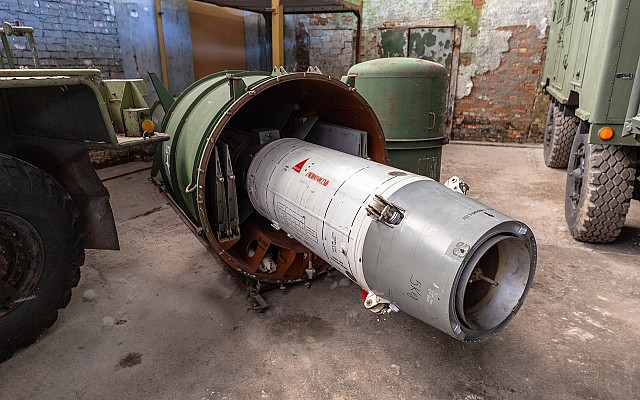S-125 Neva
Export: Pechora | NATO: SA-3 Goa
Overview
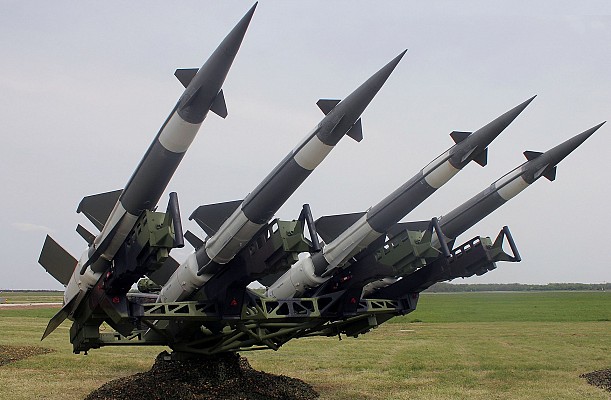
S-125 Neva-M1T
Four 5V27 missiles seen on a 5P73 quadruple launcher in service with the Serbian military in 2019.
Source: Srđan Popović -
© CC BY-SA 4.0
1970 for S-125M
1958 (Soviet state tests)
Soviet Union - Fakel design bureau (missile)
Neva (Soviet service nickname)
Pechora (export model nickname)
ItO 79 (Finnish service)
Description
Introduction
The S-125 is an early Cold War era SAM system of Soviet origin. It was developed in the early 1960's to complement the older S-25 and S-75 systems. The S-125 has the nickname "Neva" in Soviet service and "Pechora" for export. Internationally it is well known under the NATO reporting name SA-3 Goa. Compared to the S-75 the range, speed and altitude are reduced but it is more capable of engaging low altitude and maneuverable targets. The S-125 was one of the principal Soviet air defense systems and large numbers have been produced.
Design
The S-125 system uses large two stage solid propellant missiles that use radio command guidance. The second stage with its large rectangular wings acts as a booster and the first stage has a sustainer engine. A blast-fragmenation warhead with Doppler radar fuse is mounted in the nose. The missiles are launched from fixed two or four round launchers and are transported on 6x6 trucks.
Guidance
A battery is normally deployed in a hand shaped patter with the four launchers making up the fingers, the thumb being the acquisition radar and the palm being the fire control radar. The SNR-125 (NATO: Low Blow) fire control radar that is unique to the S-125 system provides tracking and radio command guidance. The acquisition radar is usually a P-15, P-19 (Flat Face) or P-15M (Squat Eye) radar combined with a PRV-11 (Side Net) height finding radar.
Firepower
The S-125 missiles are effective against supersonic fighter aircraft and subsonic targets such as transport and bomber aircraft. The original 5V24 missile has an effective range of 4 to 15 km and altitude envelope of 200 m to 10 km. The later 5V27 has a range of 3.5 to 18 km and altitude envelope of 100 m to 14 km. The S-125 is more resistant to ECM than the older S-75.
Mobility
The launchers and various associated radar systems are road mobile, but emplacement and displacement time is significant. Many S-125 were employed in semi-fixed positions with earth walls protecting the various components of the system. Modern upgrade packages, described separately, often place the S-125 launchers and radar systems on trucks or even tank chassis.
Users
The main operator of the S-125 was the USSR which used it in large quantities throughout the entire Cold War. Large quantities have been exported to Warsaw Pact nations and various Soviet allies in Asia and the Middle East. Although the S-125 is an effective system since the 1980's it has been supplemented with the more capable S-300P (SA-10 Grumble) systems. Many S-125 systems remain in service today and various upgrade programs exist.
Variants
Soviet produced systems
Upgrade packages
System composition
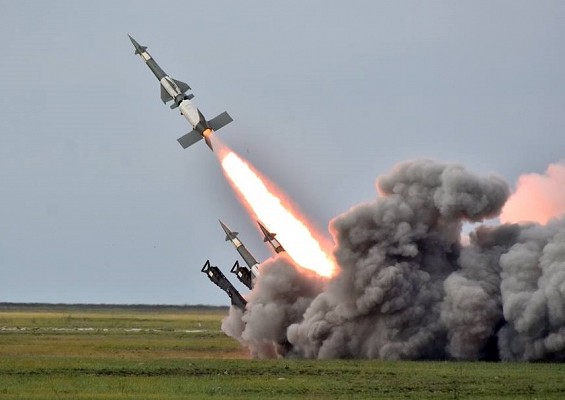
S-125 missiles
V-600, 5V24: Original missile with 15 km range, 10 km altitude and 60 kg warhead. NATO reporting name SA-3a.
V-601, 5V27: Improved missile with 25 km range, 10 km altitude and 70 kg warhead. NATO reporting name SA-3b. Contains various subversions such as the V-601P, V-601PK, V-601G, etc. At least one version has reduced minimum range of 2.8 km versus original 4 km.
V-601D, 5V27D: Missile used with S-125M1 system. Has a heavier booster with reduced launch speed and higher terminal speed.
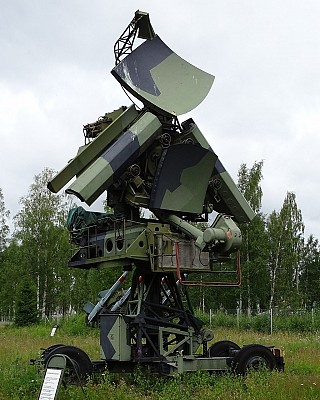
SNR-125 tracking and fire control radar
The SNR-125 radar is unique to the S-125 system. It serves as a tracking and fire control radar. The SNR-125 system consists of the UNV trailer mounted radar assembly, UNK semi-trailer radar operator van and a generator van. The SNR-125 is a compound radar consisting of the UV-10 radar flanked on each side by two orthogonal mounted UV-11 radar receivers and an UV-12 missile uplink radar on top. Late model SNR-125 also feature a TV camera for optronic guidance out to 25 km.
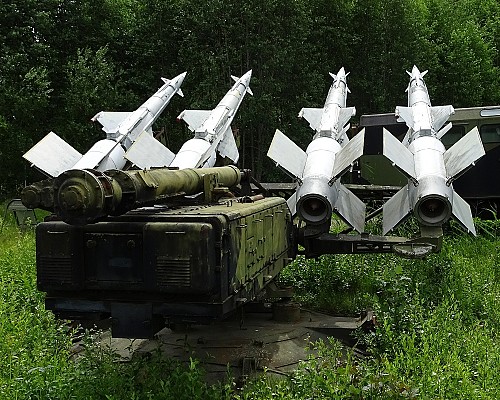
S-125 launchers
The S-125 may use two types of launchers, a semi-mobile two round launcher or fixed position four round launcher. The launchers are reloaded by the PR-14 transporter trucks.
5P71: Semi-mobile twin round launcher with blast deflector. Rests on X-shaped pedestal which can be folded and fitted with wheels, allowing the launched to be towed by a 6x6 truck. It weighs 9.7 t in position and 12.7 t on the move.
5P73: Fixed position four round launcher with engine assembly mounted behind the missiles, whereas the engine assembly is mounted in front of the missiles on the 5P71. It weighs 11 t in position without missiles.
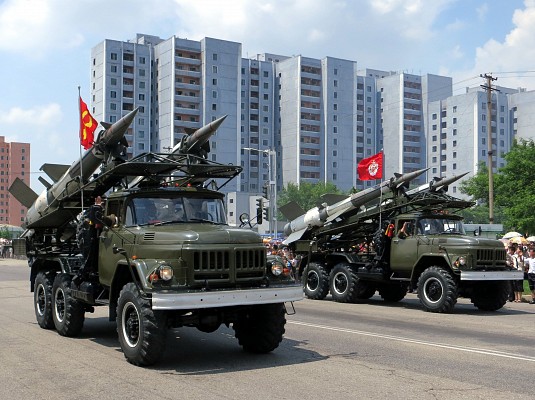
PR-14 missile transporters
The PR-14 transporters are used to transport the S-125 missiles and are equiped to load them onto the launchers. In case of emergency the missiles can be fired from the launch truck, although this provides a sub optimal launch angle and will probably damage the truck.
PR-14A: Original transporter based on the Zil-157 6x6 truck.
PR-14AM: Improved transported based on the Zil-131 6x6 truck.
Details
Media
Related articles
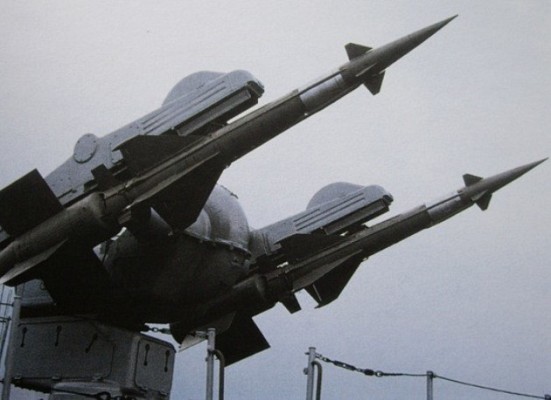
M-1 Volna
Naval variant of the S-125 surface to air missile system. Known as SA-N-1 Goa in the West.
